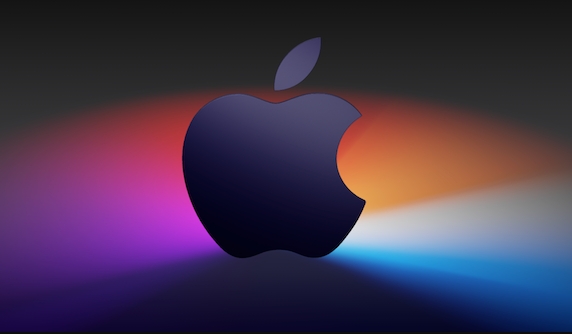System Data on Mac storage refers to a variety of system files used by macOS, including cache, logs, Spotlight index, local Time Machine snapshots, email downloads, iOS backups and emulator files, etc. These files can take up a lot of space over time, especially when caches and logs are not automatically cleaned. To reduce its size, restart your Mac to clear temporary caches, reduce clutter by managing storage "About Native", manually delete local snapshots, or clean up using third-party tools such as DaisyDisk or CleanMyMac. In addition, uninstalling less commonly used applications can also help free up space.

If you've ever checked your Mac's storage, you might have noticed a category called "System Data" taking up a significant chunk of space — sometimes tens of gigabytes. Unlike Photos, Apps, or Documents, it's not immediately clear what "System Data" includes, and Apple doesn't make it easy to dig into. So what exactly is "System Data" on Mac storage?

In short, System Data refers to files used by macOS that don't fall nearly into other categories like Apps, Photos, or Mail . It's a catch-all bucket for system-related files that are important but not directly tied to user content.
What's Included in System Data
System Data isn't just one thing — it's made up of several different types of files. Here are some of the most common components:

- Caches : Temporary files created by apps and system processes to speed things up.
- Logs : Files that track system events, app crashes, and diagnostics.
- Spotlight index : The database Spotlight uses to quickly find files.
- Time Machine snapshots (Local Snapshots) : Backups stored locally when your backup drive isn't connected.
- Mail downloads : Attachments and cached messages from iCloud Mail.
- iOS backups and simulator files if you're a developer.
- Language files and fonts not currently in use.
This mix of files can grow over time, especially caches and logs, which may not get cleaned up automatically.
Why System Data Gets So Big
You might be surprised how quickly System Data balloons. Here's why:

- macOS runs background tasks regularly, generating logs and temporary files.
- If you frequently install and uninstall apps, leftover cache files can pile up.
- Local Time Machine snapshots take up space until they're replaced.
- Mail app with large attachments can add up without you realizing.
The system doesn't always clean these files aggressively, so they sit there quietly eating away at your storage.
How to Reduce System Data Size
If you're running low on space, here are some practical ways to slim down System Data:
Restart your Mac : This clears out some temporary caches and logs.
Use About This Mac > Storage > Manage > Reduce Clutter : Some versions of macOS offer options to remove old iOS updates or simulator files.
-
Manually delete local snapshots :
Open Terminal and run
tmutil listlocalsnapshots /to see them, then delete withtmutil deletelocalsnapshots [snapshot_date]. -
Clear system caches (advanced):
Navigate to
/Library/Caches/and delete contents — but be careful not to remove anything from folders you don't recognize. Offload unused apps and files : macOS can offload apps you haven't used recently, freeing up space while keeping documents intact.
If you're not comfortable digging into system folders, third-party tools like DaisyDisk or CleanMyMac can help identify large chunks of System Data safely.
Reducing System Data isn't always straightforward, but once you understand what's inside, it becomes easier to manage. It's not mysterious or dangerous — just a part of macOS that tends to build up quietly over time.
Basically that's it.
The above is the detailed content of What is 'System Data' on Mac storage. For more information, please follow other related articles on the PHP Chinese website!

Hot AI Tools

Undress AI Tool
Undress images for free

Undresser.AI Undress
AI-powered app for creating realistic nude photos

AI Clothes Remover
Online AI tool for removing clothes from photos.

Clothoff.io
AI clothes remover

Video Face Swap
Swap faces in any video effortlessly with our completely free AI face swap tool!

Hot Article

Hot Tools

Notepad++7.3.1
Easy-to-use and free code editor

SublimeText3 Chinese version
Chinese version, very easy to use

Zend Studio 13.0.1
Powerful PHP integrated development environment

Dreamweaver CS6
Visual web development tools

SublimeText3 Mac version
God-level code editing software (SublimeText3)

Hot Topics
 How to Save Battery on MacBook? How to Improve It?
Jun 19, 2025 am 10:15 AM
How to Save Battery on MacBook? How to Improve It?
Jun 19, 2025 am 10:15 AM
You’ve had your Mac for a few years, and you’re starting to feel the effects of your device aging—the battery doesn’t hold up as well as it used to. To avoid getting stuck with a dead Mac, you have no choice but to take your charger e
 How to Delete Focus Modes on iPhone & iPad
Jun 18, 2025 am 10:40 AM
How to Delete Focus Modes on iPhone & iPad
Jun 18, 2025 am 10:40 AM
The Focus Modes functionality comes with several pre-set options such as Work, Driving, Sleep, and users are also free to create custom ones for any scenario imaginable. Should you find yourself not needing a multitude of Focus modes—whether because
 How to Automatically Send Messages with Siri from iPhone Without Confirmation
Jun 20, 2025 am 09:40 AM
How to Automatically Send Messages with Siri from iPhone Without Confirmation
Jun 20, 2025 am 09:40 AM
If you trust Siri to accurately transcribe your speech into text and send it as a message, you can activate a setting that lets Siri send messages automatically from your iPhone without asking for confirmation first.With the confirmation feature enab
 Fix iCloud Errors & “Can’t Establish Secure Connection with idmsa.apple.com” on MacOS Sierra & High Sierra
Jun 22, 2025 am 10:06 AM
Fix iCloud Errors & “Can’t Establish Secure Connection with idmsa.apple.com” on MacOS Sierra & High Sierra
Jun 22, 2025 am 10:06 AM
Some users of Mac computers running MacOS Sierra and MacOS High Sierra have reported issues when trying to log in to an Apple ID or iCloud via System Preferences, as well as problems accessing iCloud.com using Safari. In addition, Safari fails to loa
 Listen to Long Audio Messages Easier on iPhone with This Trick
Jun 23, 2025 am 09:44 AM
Listen to Long Audio Messages Easier on iPhone with This Trick
Jun 23, 2025 am 09:44 AM
Have you ever received a long audio message on your iPhone and while listening, the screen turns off, interrupting the playback and forcing you to start over? It's pretty frustrating, isn't it?Next time you receive a lengthy voice message on your iPh
 7 of the Best iOS 16 Features to Check Out Right Away
Jun 22, 2025 am 09:56 AM
7 of the Best iOS 16 Features to Check Out Right Away
Jun 22, 2025 am 09:56 AM
iOS 16 is now available for iPhone users, offering a solid update packed with practical features you're sure to enjoy.The most noticeable and exciting addition is the ability to personalize your lock screen. However, there are also plenty of smaller
 Data Breach Reports Archive — 2017
Jun 24, 2025 am 09:51 AM
Data Breach Reports Archive — 2017
Jun 24, 2025 am 09:51 AM
In this blog post, we’ve gathered the 22 most significant breaches that happened back in 2017. All of the reports were conducted by Chris Vickery — a data breach hunter, who had partnered with MacKeeper to provide repor
 How to Rename Mac Computer Name in MacOS Sonoma & Ventura
Jun 17, 2025 pm 04:53 PM
How to Rename Mac Computer Name in MacOS Sonoma & Ventura
Jun 17, 2025 pm 04:53 PM
Customizing your Mac by renaming it helps set it apart from other devices, especially when using AirDrop, and makes it easier to identify on a network.In macOS Ventura 13 and later versions, the method for changing the computer name has changed compa






